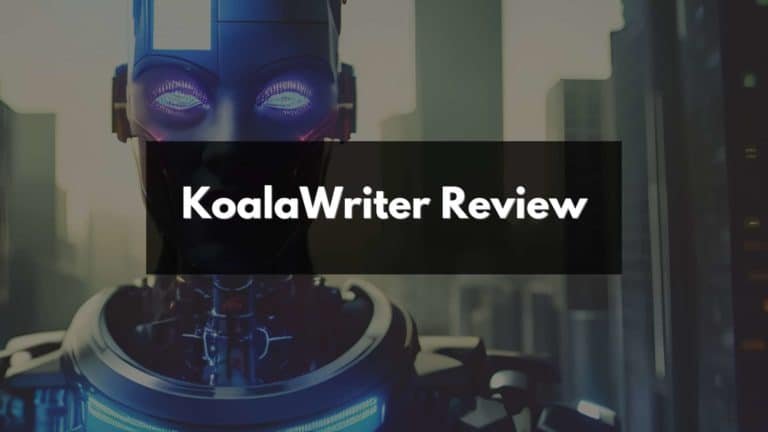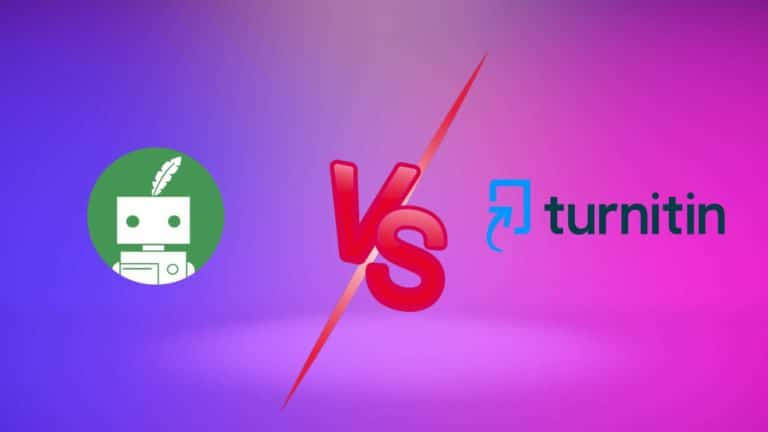Can Friday AI Pass Turnitin Detection?
Are you wondering if your Friday AI content can outsmart Turnitin’s advanced plagiarism detection? Well, you’re not alone. As a veteran in the field of artificial intelligence and education technology, I’ve also grappled with this question.
It led me to explore all corners of the tech and academic world for answers. This blog post will unfurl my findings on whether Friday AI can bypass Turnitin’s sophisticated systems without sounding an alarm bell! Ready to discover some interesting insights?.
Key Takeaways
- Friday AI’s ability to bypass Turnitin’s sophisticated plagiarism detection system is limited due to the challenges in accurately detecting AI-generated content.
- Turnitin’s AI detection technology has a 97% accuracy rate in detecting popular AI tools like ChatGPT and GPT-3, but there are concerns about false positives or negatives.
- To pass Turnitin detection, it is important for students to understand assignment briefs, conduct extensive research, employ effective paraphrasing techniques, and prioritize academic integrity.
Understanding Turnitin AI Detection and Plagiarism
Turnitin AI Detection works by using various types of AI detectors to analyze students’ submissions and detect instances of plagiarism.
How Turnitin AI Detection works
Turnitin AI detection employs advanced machine learning algorithms to scrutinize any piece of writing submitted by students. It focuses on detecting the distinctive patterns of AI-generated text that differentiate it from human writing.
Turnitin then uses these patterns to determine how much of a student’s work has been created with artificial assistance. It’s impressive to note that this tool reportedly can spot 97% of writings generated by ChatGPT and GPT-3, reaching a precision level up to 98%.
A total of 38 million student papers have already experienced the efficiency and reliability problem-solving capability offered by Turnitin’s AI cheating detector. Consequently, educators across all disciplines now possess an effective weapon against plagiarism issues, being able to maintain academic integrity even in today’s digital age where AI-writing tools are widely accessible.
Types of AI detectors used by Turnitin
Turnitin utilizes different types of AI detectors to identify and detect AI-generated content. These detectors are equipped with machine learning algorithms that analyze various aspects of a student’s submission. Some of the key AI detection techniques employed by Turnitin include text similarity detection, originality reports, and cheating detection software. These detectors play a crucial role in identifying potential instances of plagiarism and maintaining academic integrity.
Can Friday AI Pass Turnitin Detection?
Friday AI’s ability to pass Turnitin Detection is limited due to the challenges in detecting AI-generated content and the limitations of AI detection technology.
Limitations of AI detection technology
Turnitin’s AI detection technology, while advanced, does have its limitations. One of the main challenges is in detecting AI-generated content accurately. Since AI writing tools like ChatGPT can generate highly original and sophisticated content, it becomes difficult for the detection algorithms to distinguish between AI-assisted writing and genuine work.
This reliability problem raises concerns about false positives or negatives when checking for plagiarism.
Additionally, Turnitin’s tool may struggle with identifying unique topics that have not been extensively researched before. If a student submits a paper on a niche subject with limited existing sources, there is a possibility that the AI detector might flag it incorrectly as plagiarized content due to similarities found across different documents.
Challenges in detecting AI-generated content
Detecting AI-generated content poses several challenges for plagiarism detection software like Turnitin. One of the main hurdles is the rapid advancement of AI technology, which enables AI writing tools to generate content that closely resembles human writing.
This makes it difficult for detection algorithms to distinguish between authentic and AI-generated work. Additionally, as AI models continue to improve, they can produce unique and extensively researched content that may not be easily detected by traditional plagiarism checkers.
Faculty members are concerned about the reliability problem when it comes to catching students who use these advanced AI tools for cheating. As a result, there is an ongoing race between software developers trying to enhance their detection systems and those creating more sophisticated generative AI models.
How to Pass Turnitin AI Detection and Avoid Plagiarism
To avoid plagiarism and pass Turnitin AI detection, employ effective research techniques, master paraphrasing skills, and have a clear understanding of the assignment brief.
Tips and strategies for avoiding detection
I have researched and gathered some effective tips and strategies for avoiding detection by Turnitin’s AI plagiarism checker. These can help you ensure that your AI-generated content passes the detection test:
- Understand the assignment brief thoroughly: Familiarize yourself with the requirements, guidelines, and expectations of the assignment before starting. This will help you create unique and original content that aligns with the given topic.
- Conduct extensive research: Take time to gather relevant information from reliable sources. Include citations and references to support your arguments and demonstrate your understanding of the topic.
- Use paraphrasing techniques: Instead of copying and pasting directly from your sources, rephrase the information in your own words. Be careful not to change the meaning or context while paraphrasing.
- Mix AI-generated content with manual writing: Combine AI-generated content with your own thoughts, insights, and analysis. This will add a personal touch to your work and make it less likely to be flagged as plagiarized.
- Proofread and edit carefully: Thoroughly review your work for any errors, inconsistencies, or unintentional similarities with other texts. Make necessary revisions to ensure clarity, coherence, and originality.
- Use multiple AI writing tools: Employ different AI writing tools to generate content for different sections or aspects of your assignment. This will help diversify the style and language used throughout your work.
Importance of understanding the assignment brief
Understanding the assignment brief is crucial when it comes to producing AI-generated content that can pass Turnitin detection. By thoroughly understanding the requirements and expectations outlined in the assignment brief, AI content writers can ensure that their generated content aligns with what is being asked for.
This includes taking into consideration factors such as topic uniqueness, extensive research, and originality. By paying close attention to the assignment brief, AI writers can increase their chances of producing high-quality content that meets academic integrity standards and avoids triggering plagiarism detection algorithms.
Effective research and paraphrasing techniques
When writing content, effective research and paraphrasing techniques play a crucial role in avoiding detection by Turnitin’s AI plagiarism detection software. Here are some strategies to ensure your AI-generated content remains undetected:
- Thorough Research: Conduct extensive research on the topic to develop a deep understanding and gather enough information to create original content.
- Use Multiple Sources: Refer to a variety of sources, including books, scholarly articles, reputable websites, and credible journals. This helps in gaining diverse perspectives and ensures uniqueness in your content.
- Understand the Assignment Brief: Carefully read and comprehend the assignment instructions provided by your educator. This helps in tailoring your AI-generated content based on the specific requirements, reducing the chances of plagiarism.
- Proper Paraphrasing: Instead of copying and pasting directly from sources, practice paraphrasing by expressing ideas in your own words while maintaining the original meaning. Ensure that you properly cite any borrowed information.
- Citations and References: Accurately cite all the sources used in your research to give credit to the original authors. Use proper citation styles such as APA or MLA consistently throughout your work.
- Add Your Voice: Inject your own unique perspective and insights into the AI-generated content. This helps in adding originality while showcasing a personal touch.
- Review for Originality: Before submitting your AI-generated content, use a reliable plagiarism checker tool or Turnitin’s originality reports (if available) to identify any potential issues or similarities with existing works.
Conclusion
In conclusion, while AI writing tools like Friday AI have the potential to generate content that can pass Turnitin detection, there are limitations and challenges involved. The reliability of Turnitin’s AI cheating-detection software has been questioned, and faculty members have expressed concerns about maintaining academic integrity.
It is essential for students to understand assignment briefs and use effective research and paraphrasing techniques to avoid plagiarism. Ultimately, it is crucial for both educators and students to exercise caution when using AI-generated content and prioritize originality in their work.
FAQs
1. Can Friday AI pass Turnitin detection?
No, Friday AI cannot pass Turnitin detection. Turnitin is a powerful plagiarism detection tool that can identify similarities between a submitted paper and other sources, including online content, academic databases, and previously submitted papers.
2. How does Turnitin detect plagiarism?
Turnitin uses advanced algorithms to compare the text of a submitted paper against its extensive database of sources. It analyzes word choice, sentence structure, and overall writing style to identify similarities and potential instances of plagiarism.
3. Is it possible to fool Turnitin with AI-generated content?
While AI-generated content may have the ability to produce unique texts, it is not guaranteed to fool Turnitin or any other reputable plagiarism detection software. These tools are constantly evolving and improving their algorithms to catch even sophisticated attempts at plagiarism.
4. What happens if my paper is flagged for plagiarism by Turnitin?
If your paper is flagged for plagiarism by Turnitin, your instructor or institution will be notified. They will then review the specific instances of similarity identified by the software and make a determination regarding any consequences or further actions that may be taken based on their policies on academic integrity.





